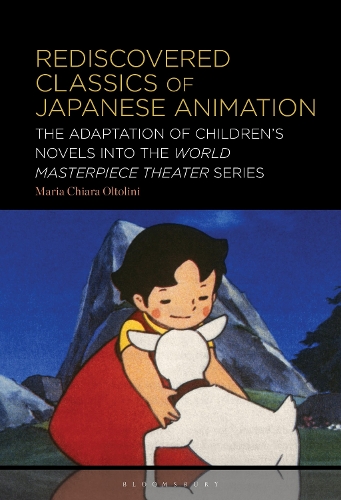
Rediscovered Classics of Japanese Animation: The Adaptation of Childrens Novels into the World Masterpiece Theater Series
(Paperback)
Available Formats
Publishing Details
Rediscovered Classics of Japanese Animation: The Adaptation of Childrens Novels into the World Masterpiece Theater Series
By (Author) Maria Chiara Oltolini
Bloomsbury Publishing PLC
Bloomsbury Academic USA
30th October 2025
United States
Classifications
Professional and Scholarly
Non Fiction
Film history, theory or criticism
791.45340952
Physical Properties
Paperback
288
Width 152mm, Height 229mm
Description
Rediscovered Classics of Japanese Animation is the first academic work to examine World Masterpiece Theater (Sekai Meisaku Gekij, 1969-2009), which popularized the practice of adapting foreign children's books into long-running animated series and laid the groundwork for powerhouses like Studio Ghibli.
World Masterpiece Theater (Sekai Meisaku Gekij, 1969-2009) is a TV staple created by the Japanese studio Nippon Animation, which popularized the practice of adapting foreign children's books into long-running animated series. Once generally dismissed by critics, the series is now frequently investigated as a key early work of legendary animators Isao Takahata and Hayao Miyazaki. In the first book-length examination of the series, Maria Chiara Oltolini analyzes cultural significance of World Masterpiece Theater, and the ways in which the series pioneered the importance of childrens fiction for Japanese animation studios and laid the groundwork for powerhouses like Studio Ghibli.
Adapting a novel for animation also means decoding (and re-coding) socio-cultural patterns embedded in a narrative. World Masterpiece Theater stands as a unique example of this linguistic, medial, and cultural hybridisation. Popular childrens classics such as Little Women, Peter Pan, and Anne of Green Gables became the starting point of a full-fledged negotiation process in which Japanese animators retold a whole range of narratives that have one basic formula in common: archetypal stories with an educational purpose. In particular, the series played a role in shaping the pop culture image of a young girl (shjo).
Examining the series through the lens of animation studies as well as adaptation studies, Oltolini sheds new light on this long-neglected staple of Japanese animation history.
Reviews
This is one of the few books that touch upon Japanese animation and children's literature. It is very well-written and a "must read" for teachers of Japanese animation, Japanese literature, and children's literature. * Dixon Wong Heung Wah, Associate Professor of Global Creative Industries in the School of Modern Languages and Cultures, University of Hong Kong, China *
Maria Chiara Oltolini explores the adaptation of western childrens literature into Japanese animation, focusing on World Masterpiece Theater and dives into the pre-WW2 origins, and the subsequent Post-war occupation and boom years of anime as she shines a light into a relatively unexplored corner of the back and forth relationship between western storytelling and the Japanese anime/manga field. * Northrop Davis, Professor, University of South Carolina, USA *
Building on the published works of others and citing numerous Japanese, English and other languages sources, Maria Chiara Olitinis interdisciplinary research not only provides us the historical and literary backgrounds of the well-known World Masterpiece Theater but also gives a rich analysis of the adaptations and transformations of the original Western children literature in the animation form. Her work helps us to further understand the international success of Japanese postwar animation and in particular, the Japanese inclination towards animating children literature classics from the Western world and the subsequent cultural interpretation, reshaping and animated imagery realization of the stories. * Tze-yue G. Hu, Independent Scholar, USA, and author of Frames of Anime: Culture and Image-Building (2010) *
Author Bio
Maria Chiara Oltolini has a BA, MA, and PhD from Universit Cattolica del Sacro Cuore of Milan, Italy, where she has been working as a Teaching Assistant in Semiotics and History and Language of International Cinema for several years. In 2017, she was a visiting scholar at Cardiff University, UK as part of her PhD program. Her research interests include adaptation as a form of intermedia and intercultural expression, focusing on the relationships between Japanese animation and Childrens literature.
